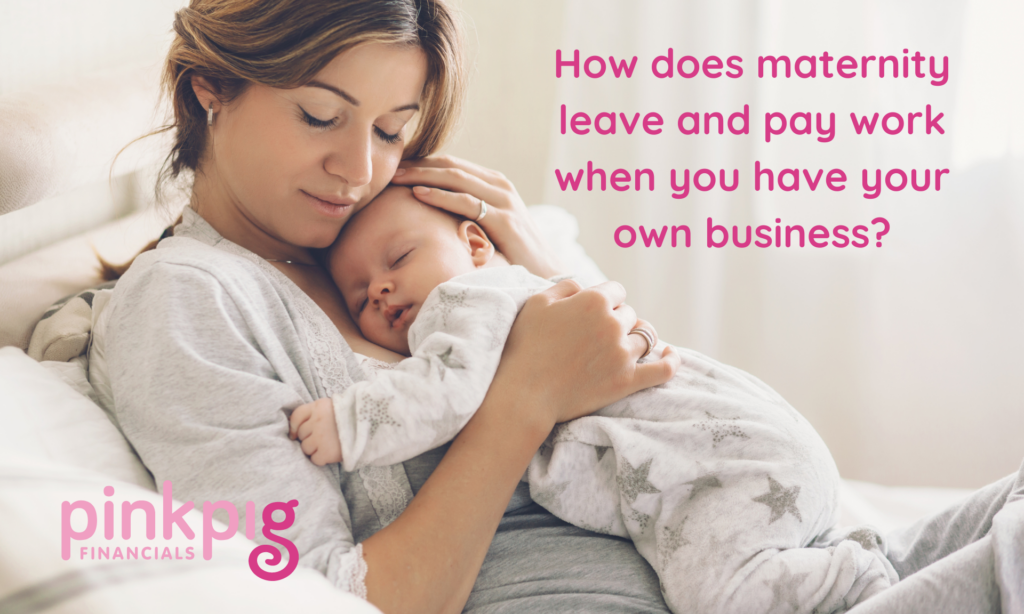Congratulations, you’re pregnant and getting ready to have a little bundle of joy! While this is such an exciting time, it can also be a bit stressful if you’re a business owner. Unlike traditional employees, you don’t have an HR department laying out your maternity leave and pay options.
So what options do you have?
First off, how is your business set up – are you a sole trader or a limited company? Because depending on the structure depends on what your options are. So let’s take a look at each!
Sole Trader
If you’re set up as a sole trader then the standard maternity leave and pay you’re possibly aware of for employees unfortunately does not apply. However, as a sole trader you could be entitled to claim the Maternity Allowance.
Limited Company
If you’re set up as a limited company, and this is your only income, then you’re also likely an employee too. Being an employee on PAYE gives you the same rights as any other employee in the eyes of the law. You are most probably entitled to Statutory Maternity Pay (SMP) – but remember, it will be based on your salary amount only – your dividends will not be taken into account when working out SMP.
You can claim the SMP back from HMRC, and if you’re a small employer you also get a little compensation too. Depending on how many people you have on payroll – and their levels of salary you have three options here:
- The standard way of claiming back is by deducting the SMP paid to you off of the PAYE & NI you pay to HMRC each month – however this is really only a deduction if you have other employees where their tax and NI is higher than your SMP
- If you’re the only employee, or other employees are on a lower salary, the credit will build up on your account and you will then need to claim back from HMRC at the end of each tax year. So if your maternity leave goes over two tax years then that’s two separate claims to make
- The other alternative is to apply for upfront funding – you’re only able to do this is your payment to HMRC each month is less than the SMP being claimed, and will cause you financial hardship to pay it out and claim it back after. This can be applied for here. You will need your Gateway log in details to complete the application.
If you’re not employed, or you’re not eligible for any other reason, then you could be entitled to the Maternity Allowance we mentioned above for sole traders instead.
Regardless of whether you claim SMP or Maternity Allowance – as a shareholder you are still entitled to dividends while on maternity leave.
So that’s the legal part – but how about practically?
Remember, you’re wearing two hats here – mum and CEO. So you’ll also want to decide how hands-on you want to be while on leave. Will you take a full break or just scale back? Having a second-in-command who can take over the reins temporarily is key to allow you to step back and concentrate on your new role as a mum. You may even want to hire a temporary contractor or two to fill in gaps.
Your business is quite possibly also your ‘baby’ – you’ve nurtured and grown it to where it is today, so it’s only right that you want to ensure your business is also taken care of – and probably check in on. But keep in mind that you only have the Keep In Touch (KIT) days for working on or within your business, so use them wisely, and don’t go over, or you are then no longer entitled to statutory maternity pay.
Don’t be afraid to ask for help, whether that’s from your partner, friends, family, or outsourcing tasks. Raising a newborn while running a business is no joke! Build yourself a supportive village.
How about the baby’s dad – what are his options?
You’re probably aware of the ‘traditional’ 2 weeks paternity leave available to fathers, but did you know there is also now Shared Parental Leave? This is a great way to share the leave between the both of you – and also keep a hand in your business, so it’s definitely worth checking out and considering if this will work for you.
So to sum up:
At the end of the day, there’s no one-size-fits-all approach. Set up a plan ahead of time, but also give yourself grace to adjust as needed once baby arrives. This is a special life moment, so do what feels right for you and your family!
And if you need some help in your village with your accounts – we’re here to help!

